To refresh or rebrand? That is the question.
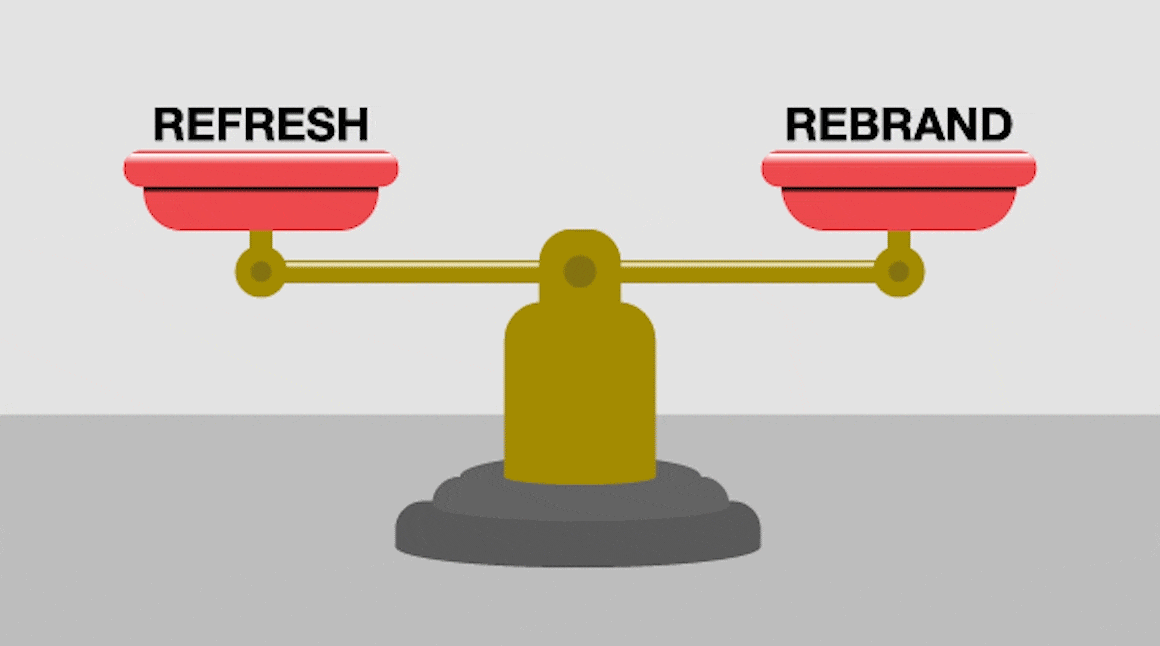
For any business looking to thrive over the long-term, it’s well recognised that a strong brand identity is vital. As a meaningful and distinctive expression of who you are and what your brand stands for, your identity is what helps you cut through the competitor noise and signals clearly to your prospective customers that you’re right for them.
At its most simple level, a well-crafted brand identity makes it easier for a business to sell, and for its customers to buy.
All things considered, your brand identity is worth some attention and investment.
In this post we’ll be shining a light on identity refreshes vs rebrands and how they differ. We’ll also explore how to decide what’s the right course of action for an organisation at a given time, and the implications of pursuing one direction over another.
The brand identity refresh
Same story, better told
Most brand identity briefs we encounter are framed as rebrand projects. In reality, the vast majority would be better described as brand identity refreshes. A refresh focuses predominantly on the brand identity, that is, how the brand is reflected and articulated through a particular blend of verbal, visual and other sensory assets.
A refresh centres on how your brand story is being told, not what that story is. The story is still fundamentally the one you wish to tell, and the objective is simply to tell it better. As part of the refresh exercise, there is often some work required to bring greater clarity and focus to the brand’s positioning, but the general positioning territory – the mental space you want to occupy in the mind of your customer – should be fundamentally the same.
When to refresh
The desire for a refresh is typically sparked by the recognition that a brand’s identity is coming up short in one of two ways. It is either insufficiently meaningful, or not distinctive enough. Most commonly, it’s a combination of both.
From the perspective of being meaningful, it may be that the original identity never truly reflected the brand’s positioning and what it stands for. Or, it could simply be that over time, the way the brand looks and sounds has gradually become less focused, consistent and coherent.
Both scenarios are common, with the same implications. If the brand’s identity isn’t accurately communicating, reinforcing and amplifying what the brand is fundamentally about and why anyone should care, then an identity refresh may be the right strategic move.
Brand or bland?
A lack of distinctiveness may also prompt consideration of a refresh. In competitive markets the fight for standout and salience is relentless. The weapons at every brand’s disposal are their ‘codes’.
Colour, imagery, brandmarks, straplines, characters, typography, sound, even smell (think Lush), these and more may be creatively nurtured and promoted to increase cut-through and recall, and establish valuable differentiation.
If your brand has reached the point of becoming what we call a ‘bland’, or is in danger of heading that way, then again, a robust review and potential refresh of your identity makes strategic and commercial sense.
Brand refresh examples
Our brand development work with Gatehouse Bank was essentially an identity refresh, preceded by some time spent better defining the bank’s positioning. At the point of mark-making’s engagement, Gatehouse was steadily building a reputation as one of the best shariah-compliant banks in the UK.
However, it was acknowledged that the bank’s full potential was still some way off being realised. As a result, there was an ambition to broaden Gatehouse’s appeal to include savers and borrowers who may not have previously considered a shariah-compliant option. In practice, that meant telling the Gatehouse story better, not just in verbal terms, but also through developing the bank’s visual identity.
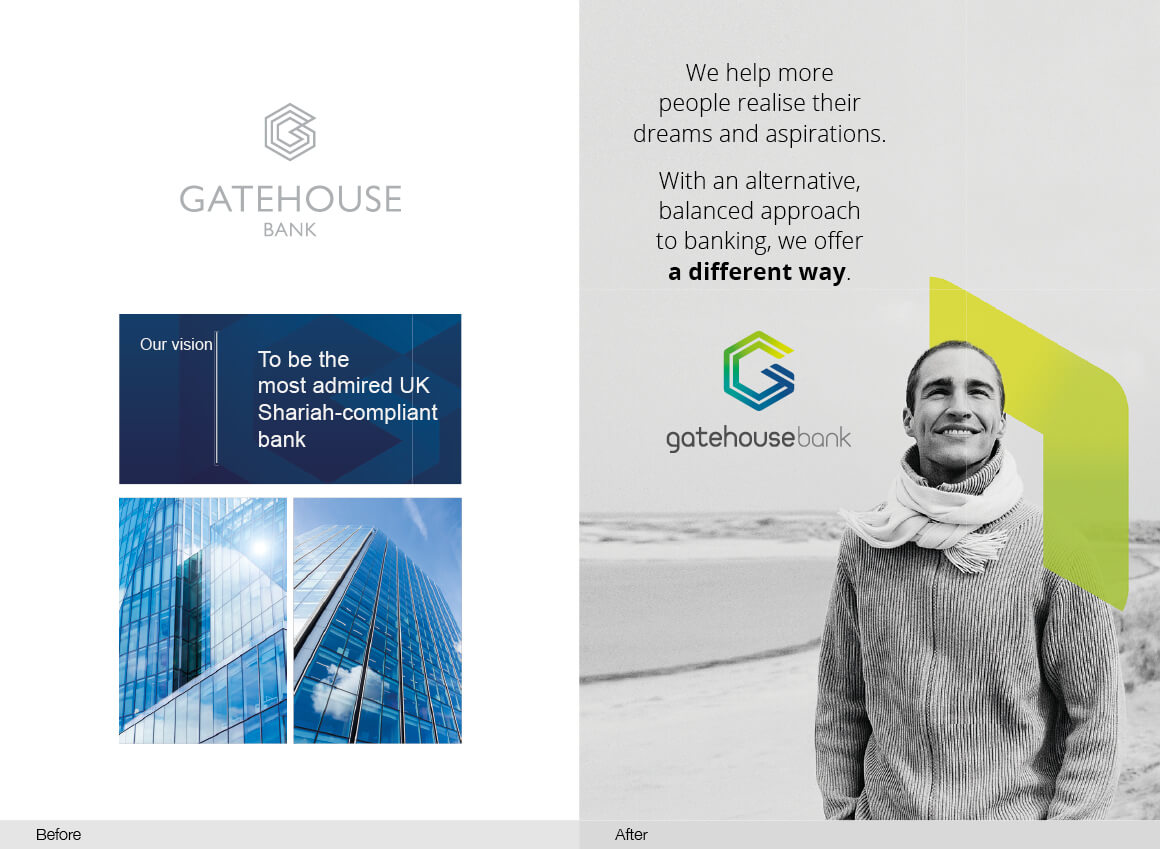
It was a similar situation with specialist financial reconciliation software provider Watson Wheatley. Their proposition wasn’t changing, but there was a clear opportunity to communicate more effectively through their brand identity.
The creative solution was simple yet transformational, bringing to life exactly what they do and in a manner that delivered standout in their market.
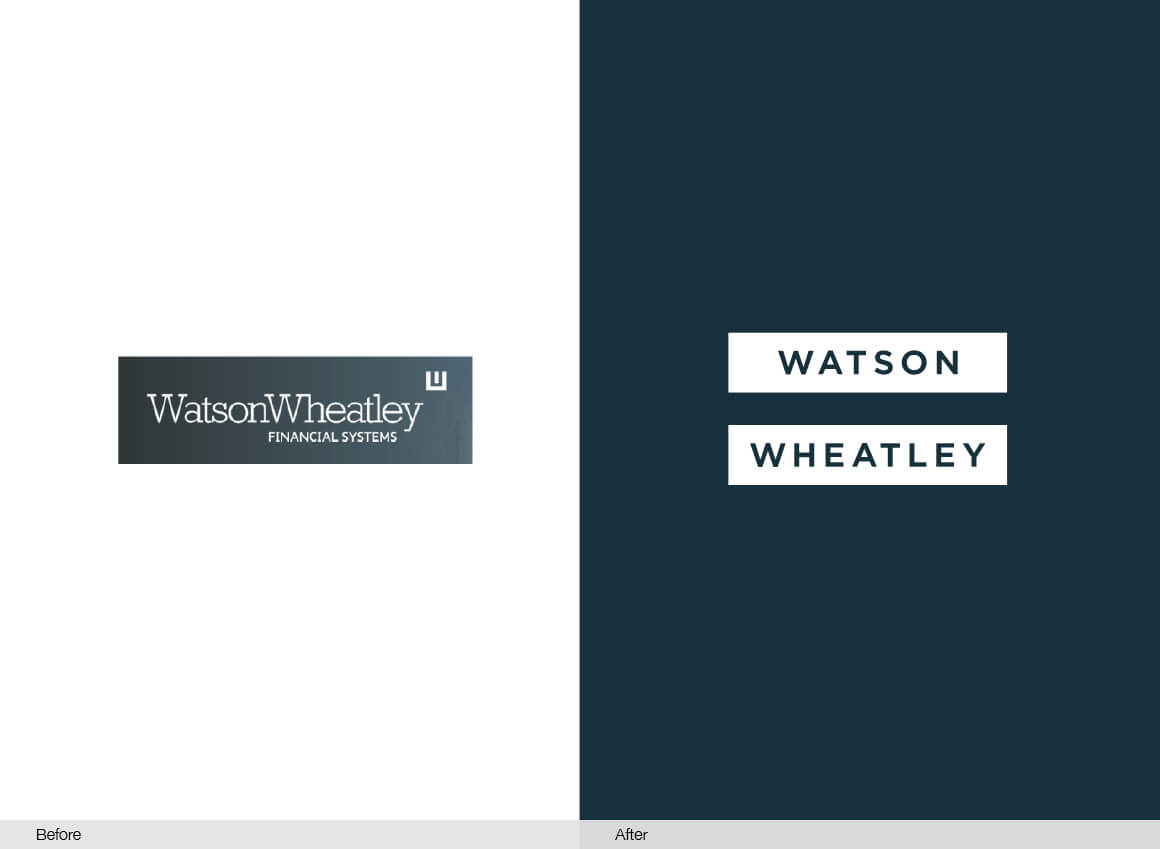
The most proactive of the brands we have worked with over the years, often review their brand identities from a position of strength – at points when the business is actually performing at or close to its best, and there would appear to be no immediate need to address their identity.
These brands acknowledge the gains to be made from the perpetual evolution and fine-tuning of how they present themselves to the world.
The Mortgage Works is an excellent example of this. Since the identity’s original conception some twenty-plus years ago, regular appraisals in the light of competitor activity and minimal proposition evolution have driven the strategic evolution of the brand’s core brand identity assets, specifically the use of orange and a unique illustrative approach.
As a result, The Mortgage Works has consistently led the field as the UK’s number one buy to let mortgage lender, for key performance metrics including unbranded recall and unprompted willingness to recommend (Source: BVA BDRC, Project Mercury).
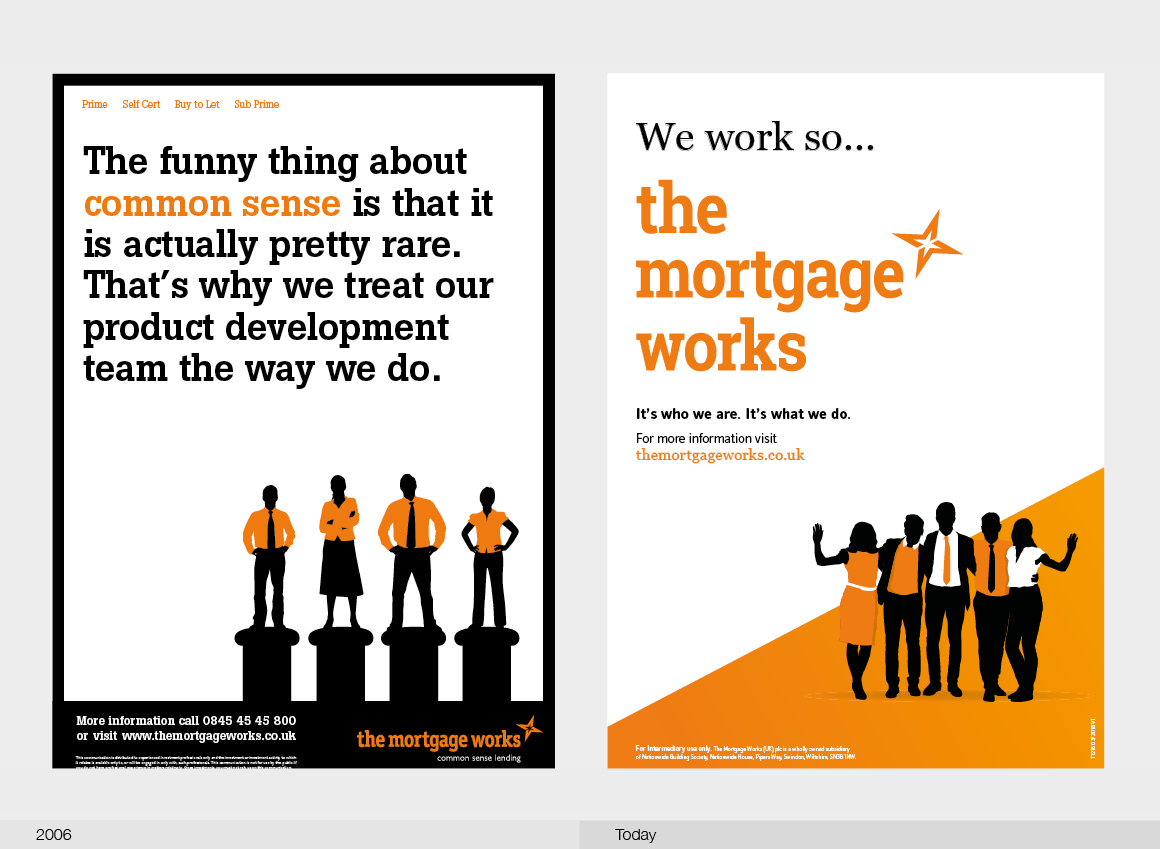
The rebrand
A new story, well told
The fundamental difference between a refresh and a rebrand is that a brand’s positioning has changed. In other words, what you want your audience to think when they think of your brand is no longer what it was. And, as a natural consequence, how you express that positioning, your brand identity, is no longer fit for purpose.
If a refresh is a bit like a face-lift, where the underlying foundation, or bone structure, is essentially unchanged, but the surface is revitalised, a rebrand goes deeper. It requires some fundamental restructuring beneath the skin. It’s a more complex and costly process, and the stakes are higher.
When to rebrand
The positioning change may be precipitated by a number or combination of factors, from a conscious strategic redirection such as targeting an entirely new audience, to a response to an evolving competitive landscape or wider cultural shifts beyond anyone’s control. Whatever the reason, the implication for the brand’s identity are the same. What currently exists is highly unlikely to be communicating what it needs to.
If you’re unsure as to whether an identity refresh is required or you are potentially into rebranding territory, posing a few simple questions in relation to your brand can help.
Is your proposition compelling to your target audiences?
Your customers must get it and care.
Is your positioning differentiated?
From your customers’ perspective, some element or combination of what you do, how you do it and why you do it should be setting you apart from your competition in a meaningful way.
Is your story authentic?
You have to be walking the talk, living up to your claims in every respect.
And is it sustainable?
You may be able to live up to your promise now, but you must also be able to maintain it over time.
If the answer’s ‘no’ to some or all of these questions, you are into the realms of rebranding.
When Oxfordshire-based brewer Brakspear began to struggle with the first two questions, it was time to consider a rebrand.
Brakspear was experiencing diminishing sales as a result of an influx of craft beers encroaching on market share, coupled with a general decrease in the popularity of bitter. The existing identity felt tired and dated compared to new industry entrants, and our challenge was to re-envision Brakspear’s place in the market as a contemporary bitter.
The result was not just a new identity, but one based on a story more closely aligned to Brakspear’s location and unique brewing process. One designed to appeal to younger, new audiences while remaining relevant to its loyal drinkers, and ultimately reverse the trend of declining share in a declining market.
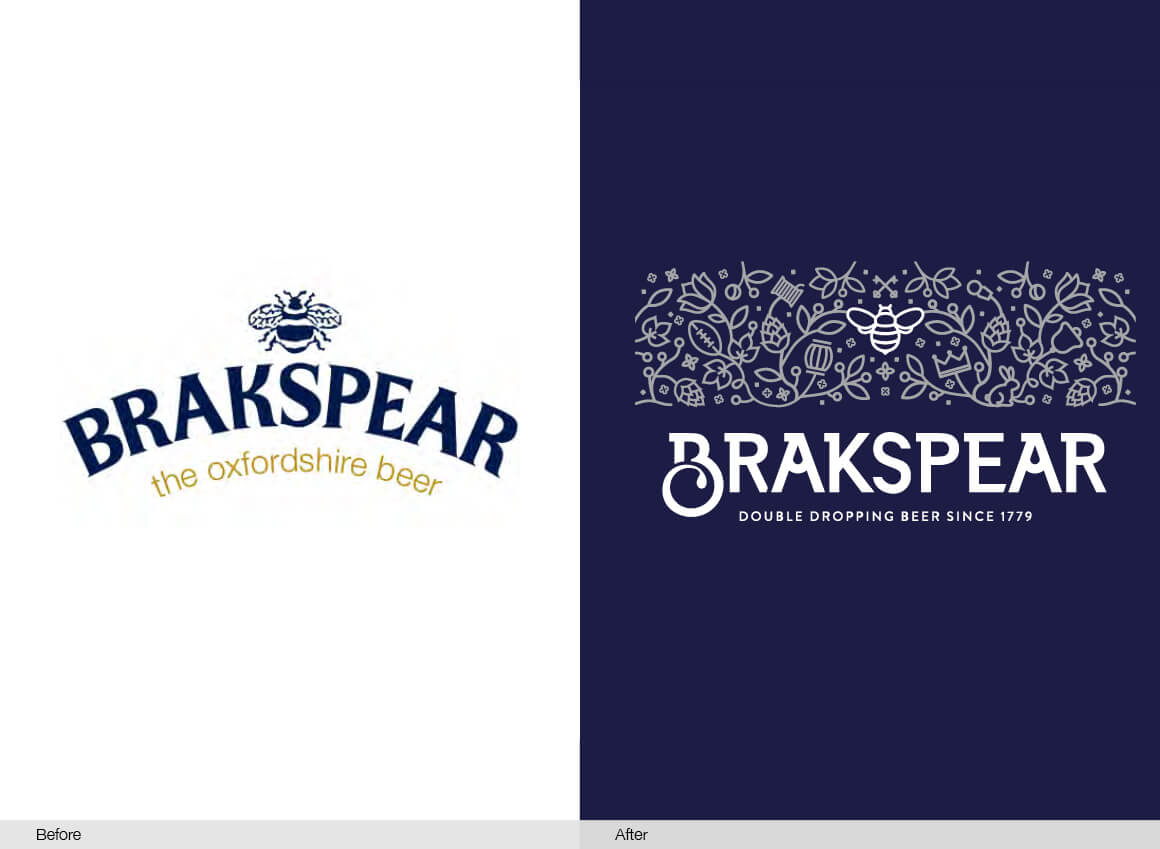
The name game
Though not unheard of with a refresh, a rebrand more typically warrants consideration of a name change. In the context of a rebrand, when the brand positioning has changed, a new name represents an opportunity to communicate something about the new positioning.
But tread warily, name changes are notoriously challenging on many levels. If there is no obvious value to be had from a new name, then time, resources and money may well be better directed towards more rapidly imbuing the existing name with the values and meaning of the new brand story.
Generally speaking, unless there are negative associations attached to your current name, or another strong reason for change, it often makes more sense, commercially and strategically, to stick with what you have, and build a new identity around it.
With the rebranding of Clearview Traffic, we adopted a halfway house approach to the name. After forty plus successful years building a solid reputation in the road safety and traffic management sector, Clearview had begun to lose its way. With an over-emphasis on product, the brand was no longer tuned in to customer needs. A repositioning that shifted the brand’s focus from products and features, to people and problems solved, underpinned by a clearer sense of purpose, resulted in an identity overhaul that included dropping ‘Traffic’ from the name in favour of ‘Intelligence’. By doing so the name itself communicated something of nature of what the brand does and stands for.
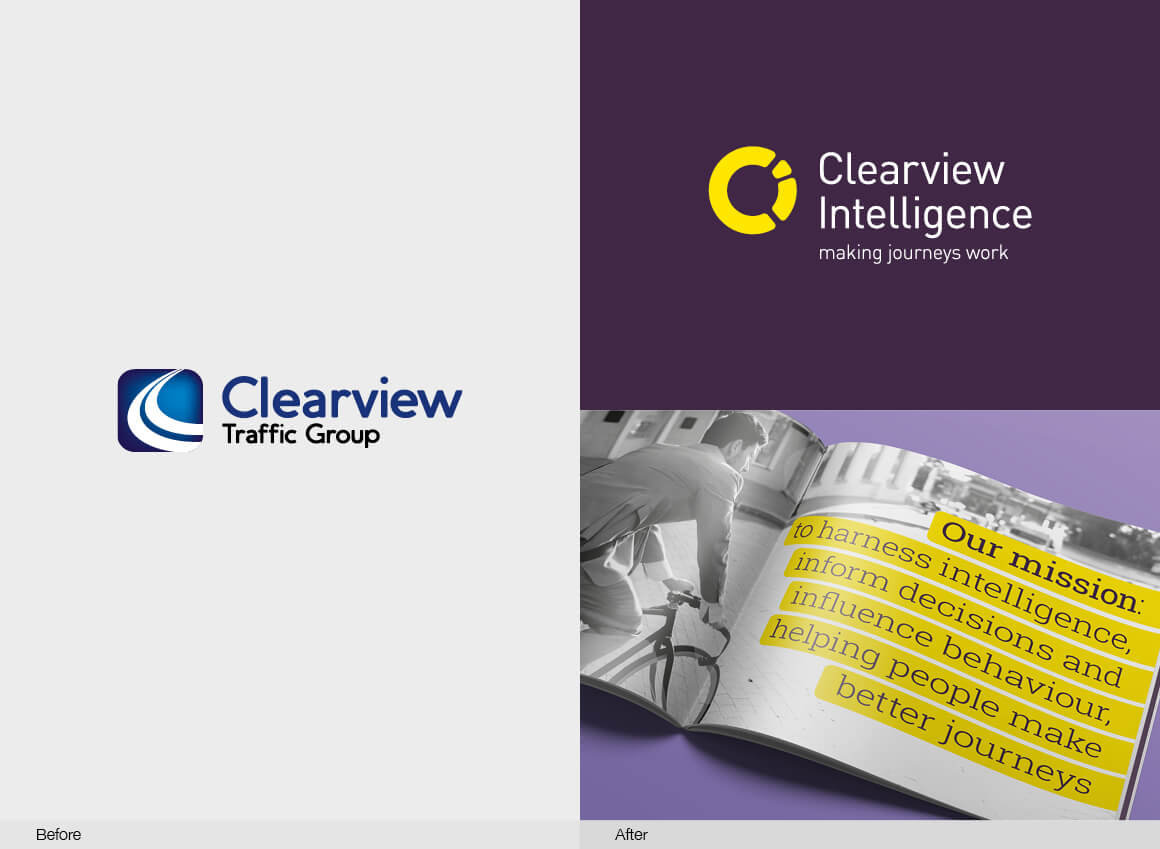
Regular review
Of the few things we can all be certain of, one is change. Across the lifecycle of any organisation, change is a constant. Audience needs, business capabilities, competitor landscape, cultural context – nothing stays the same.
So if there’s one key takeaway here, it’s that the objective review of your brand’s positioning and identity should be a regular, frequent, non-negotiable, part of your marketing strategy, even when business is booming.
Whether that leads to refreshing your identity or a deeper rebranding exercise, by staying on the front foot you can at least be confident you’re not letting complacency compromise future success.
About Alastair
Alastair Williams
Founder and Creative Director
Ali co-founded mark-making* in 1995 after graduating from Lancaster University in Marketing & Visual Arts. Ali works closely with our clients to help bring clarity to their story, and oversees the wider mm* team to ensure it’s expressed effectively, with authenticity and coherence. Ali regularly speaks on the concept of Magnetic Brands, an approach to creating and building brands that embraces the power of being more human, in pursuit of both profit and positive impact. Ali leads mark-making’s work in helping ambitious organisations of all shapes and sizes build extraordinary and enduring appeal.